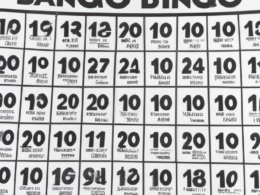Bingo patterns are a mathematical phenomenon that occur in certain situations when Bingo cards are drawn. Patterns can be very simple, such as the number of dots in a horizontal row or column, or they can be more complex, such as the sum of the numbers in a particular row or column.
The simplest Bingo pattern is called a straight line. In this pattern, every row and column has the same number of dots (usually five), and every other line is a duplicate of the first line. For example, the first line might have four dots in the first column, two dots in the second column, and one dot in the third column.
The next line would have two dots in the first column, three dots in the second column, and one dot in the third column. And so on.
Another simple Bingo pattern is called a cross. In this pattern, every row and column has a different number of dots (usually six), and every other line is a duplicate of at least one other line. For example, the first row might have four dots in the first column, two dots in the second column, and one dot in the third column.
The next row would have one dot in the first column, two dots in the second column, and three dots in the third column.
More complex patterns can also occur. For example, let’s say that you’re playing Bingo using an eight-column grid.
In this grid, each row has two columns (left and right), and each column has four rows (top to bottom). So there are 16 possible combinations for each dot position (2^8 = 64), including all of the simple patterns mentioned above as well as some more complex ones.
One particularly interesting pattern is called an octagon. In this pattern, every row and every other column has either eight or ten dots (depending on which direction you look at it from), and every other line is a duplicate of at least one other line. For example, the first row might have four dots in both columns, two dots in both rows below it (leftmost and rightmost columns), and one dot in both rows above it (first and second rows).
The next row would have two dots in both columns, three dots in both rows below it (leftmost and rightmost columns), and two dots in both rows above it (first and second rows).








